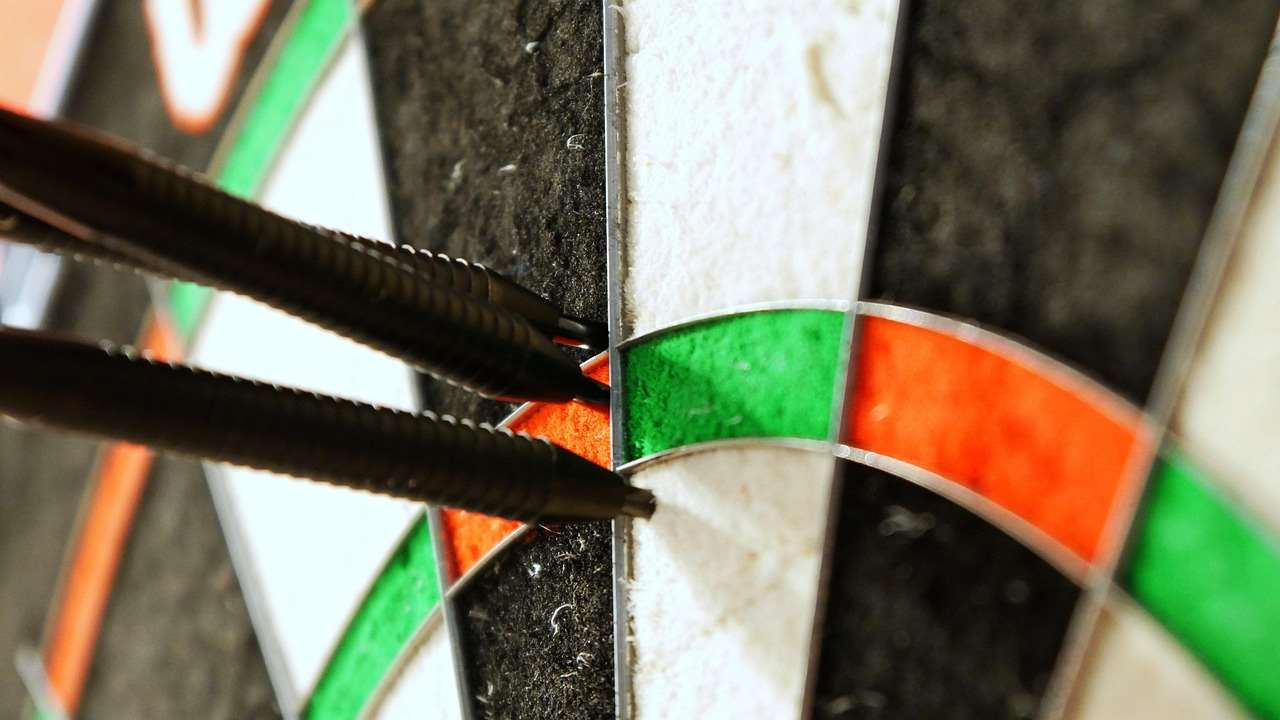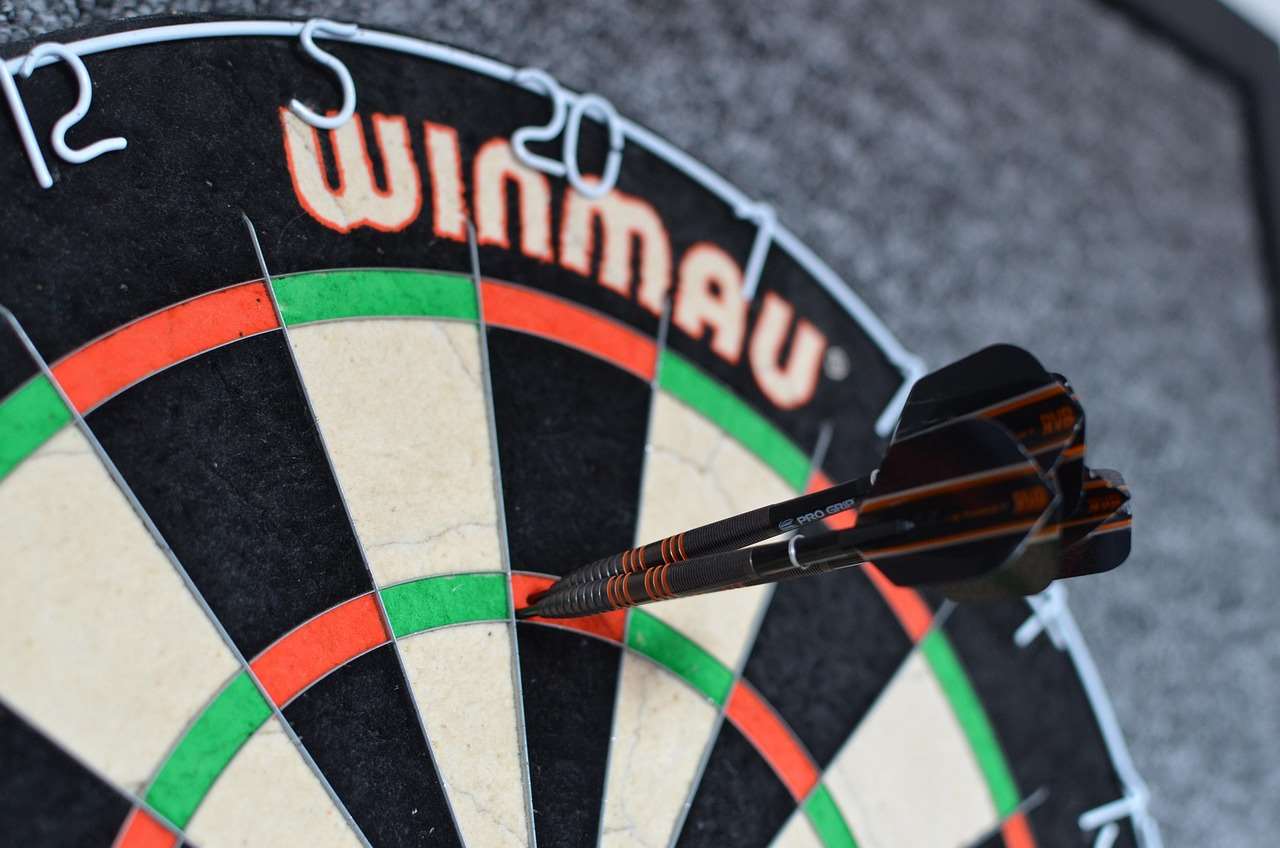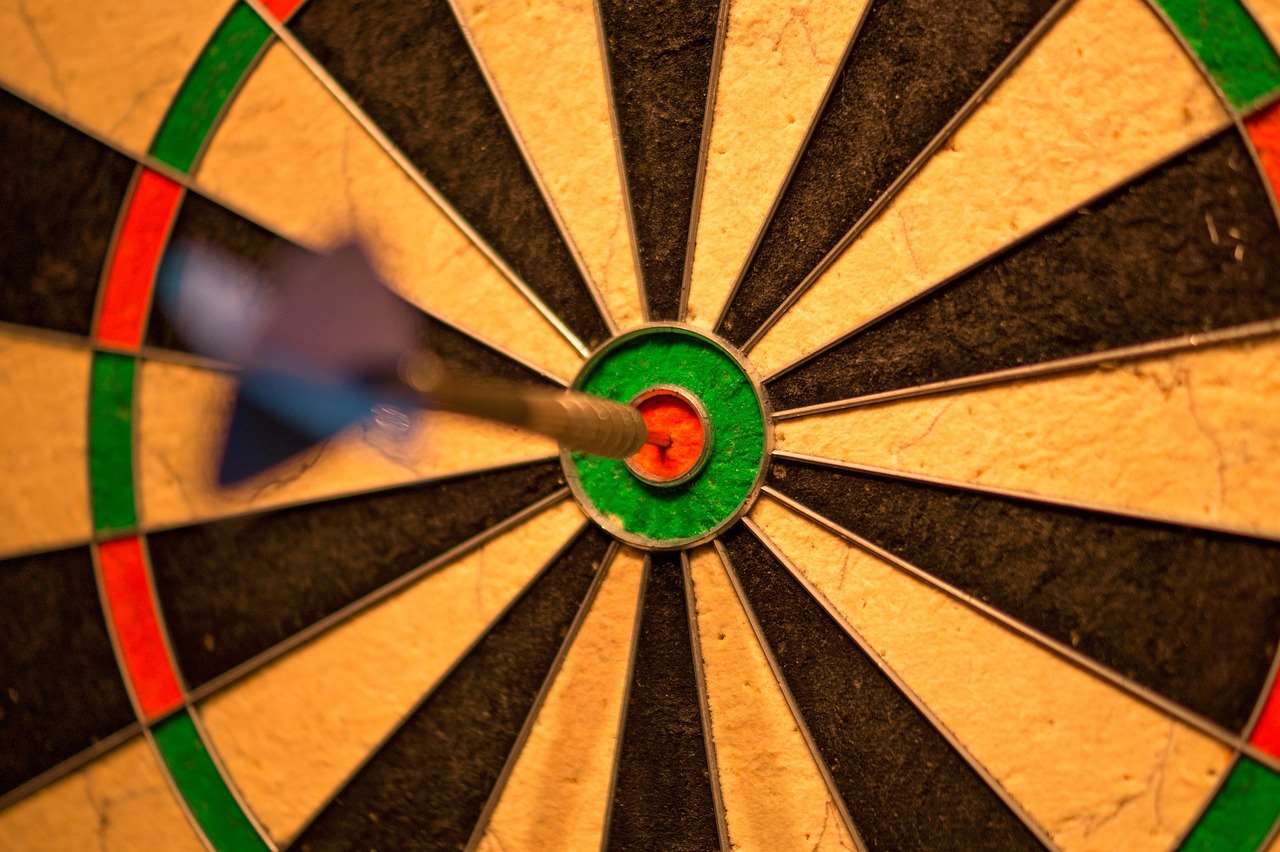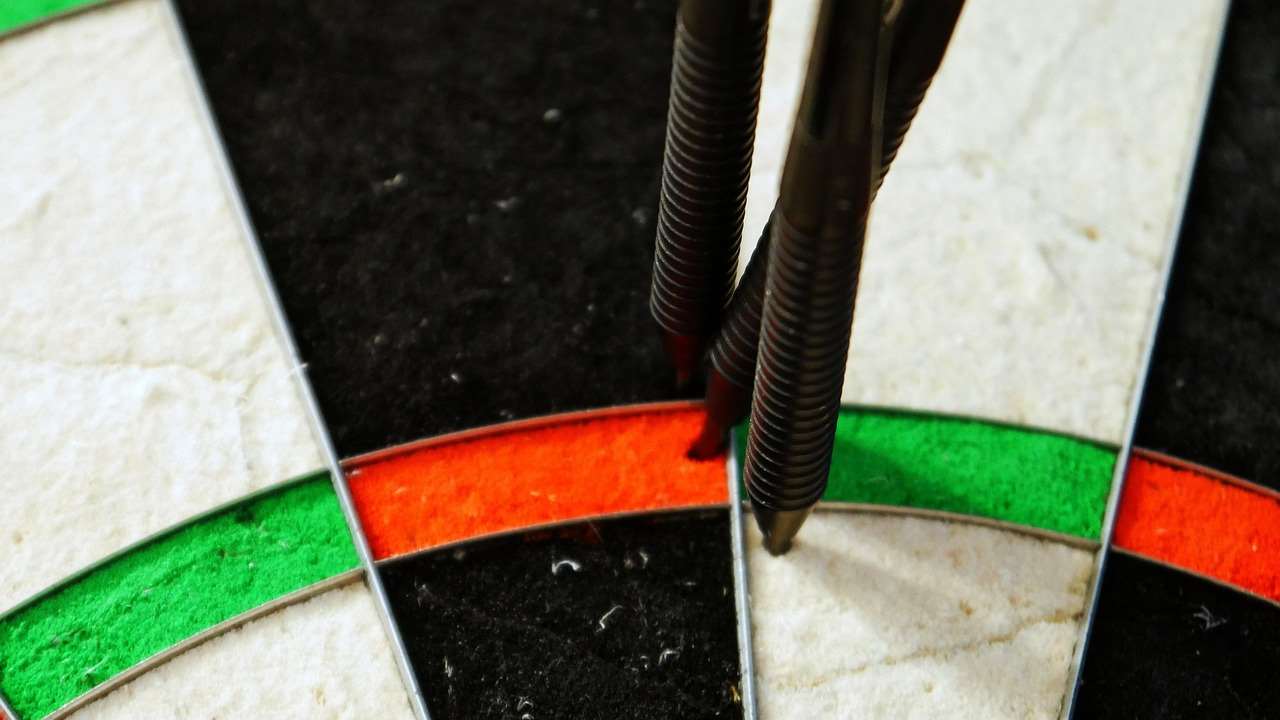Understanding flight thickness impact is crucial for optimizing dart trajectory and achieving consistent throws; thicker flights generally provide more stability, while thinner flights offer reduced drag and potentially higher speeds. This article explores how varying flight thicknesses affect dart performance, covering aerodynamics, player style considerations, and practical tips for selecting the right flights.
⚠️ Still Using Pen & Paper (or a Chalkboard)?! ⚠️
Step into the future! The Dart Counter App handles all the scoring, suggests checkouts, and tracks your stats automatically. It's easier than you think!
Try the Smart Dart Counter App FREE!Ready for an upgrade? Click above!
Understanding the Aerodynamics of Flight Thickness Impact
The aerodynamics of a dart in flight are significantly influenced by the flight thickness. A thicker flight creates a larger surface area, leading to increased drag. This drag can be beneficial as it helps to stabilize the dart, preventing it from wobbling excessively and promoting a straighter path. However, too much drag can slow the dart down, potentially affecting its accuracy, especially over longer distances. On the other hand, thinner flights generate less drag, allowing the dart to travel faster and potentially further with the same force. This can be advantageous for players who prefer a faster, more direct throw. The optimal flight thickness depends on several factors, including the player’s throwing style, the weight of the dart, and the distance to the dartboard.

Dart flight size and shape also come into play. Larger flights, regardless of thickness, tend to provide more stability. Smaller flights offer less drag, but require a more consistent and accurate throw. Experimenting with different combinations of flight size and thickness is essential to find what works best for your individual technique. Remember to consider the material the flight is made from too; stiffer materials can help maintain the flight’s shape and aerodynamic properties during flight. Ultimately, the interplay between dart weight, flight size, flight thickness, and throw style will determine the dart’s trajectory and overall accuracy. Finding the right balance can lead to significant improvements in your game.
The Role of Drag and Stability
Drag and stability are two key aerodynamic forces that are directly influenced by flight thickness. As mentioned earlier, thicker flights increase drag, which helps to stabilize the dart. This is because the increased surface area provides more resistance against lateral movement, preventing the dart from veering off course. This stabilizing effect is particularly beneficial for beginners or players who struggle with inconsistent throws. The added drag effectively corrects minor imperfections in the throw, resulting in a more predictable trajectory. However, experienced players with a consistent and controlled throw may find that the increased drag of thicker flights actually hinders their performance. In their case, the reduced drag of thinner flights may allow for greater speed and accuracy. So, it really comes down to balancing the benefits of stability against the potential drawbacks of reduced speed.
Conversely, thinner flights reduce drag, allowing the dart to travel faster. This can be advantageous for players who generate a lot of power in their throw and prefer a faster, more direct trajectory. However, the reduced drag also means less stability. This makes thinner flights more susceptible to wobbling or veering off course if the throw is not perfectly executed. Therefore, thinner flights are generally better suited for experienced players with a consistent and accurate throwing technique. They allow for greater control and precision, but require a higher level of skill and consistency to utilize effectively. If you are unsure Choose Best Dart Equipment for you, testing different flight thicknesses can really highlight the impact on your throw.

Choosing the Right Flight Thickness for Your Style
Selecting the appropriate flight thickness is a crucial step in optimizing your dart setup for your specific throwing style. There is no one-size-fits-all solution, as the ideal flight thickness depends on a variety of factors, including your grip, stance, throwing motion, and overall power. Experimentation is key to finding what works best for you, but understanding the general principles can help you narrow down your options and make more informed decisions.
Consider your throwing power. Players with a strong, forceful throw often benefit from thinner flights, which allow the dart to travel faster and cut through the air more efficiently. The reduced drag complements their throwing style, resulting in a more direct and powerful trajectory. On the other hand, players with a gentler, more finesse-based throw may find that thicker flights provide more stability and control. The added drag helps to correct any minor imperfections in their throw, leading to a more consistent and predictable outcome. Think about the dart weight as well; heavier darts generally benefit from thicker flights as the increased drag helps to stabilize them in flight.
Also think about your grip. A tight grip can impart more spin on the dart, which can benefit from thicker flights. A looser grip might pair better with thinner flights. Your stance and throwing motion can also impact the ideal flight thickness. A more upright stance and a smooth, flowing throwing motion often pair well with thinner flights, while a more angled stance and a more jerky, powerful throwing motion may benefit from thicker flights. By carefully considering these factors and experimenting with different flight thicknesses, you can fine-tune your dart setup to perfectly complement your throwing style and maximize your potential on the dartboard. Remember that selecting flights is part of the process of understanding flight thickness impact on performance.

Factors to Consider When Selecting Flight Thickness
When making your decision, keep these points in mind:
- Dart Weight: Heavier darts generally pair well with thicker flights for added stability.
- Throwing Power: Stronger throws may benefit from thinner flights for increased speed.
- Throwing Style: Smooth, controlled throws may work better with thinner flights, while less consistent throws may benefit from thicker flights.
- Personal Preference: Ultimately, the best flight thickness is the one that feels most comfortable and produces the best results for you.
Don’t be afraid to experiment! Buy a variety of flight thicknesses and test them out. Keep track of your scores and note any differences in your throw. Over time, you’ll develop a better understanding of how flight thickness impacts your performance and be able to make more informed decisions about your dart setup. Consider also the flight shape and material alongside the thickness. Even subtle differences in these properties can affect your throw.
Practical Tips for Optimizing Flight Performance
Beyond selecting the right flight thickness, there are several practical tips you can implement to optimize your flight performance and maintain your dart setup. Regularly inspecting your flights for damage, cleaning them properly, and storing them carefully can all contribute to improved accuracy and consistency on the dartboard. Here are some helpful suggestions:
- Regularly Inspect for Damage: Check your flights before each game for any signs of wear and tear, such as tears, dents, or bends. Damaged flights can significantly impact the dart’s trajectory and should be replaced immediately.
- Clean Your Flights: Dust, dirt, and grime can accumulate on your flights, affecting their aerodynamic properties. Clean your flights regularly with a soft cloth and mild detergent to remove any buildup and maintain their optimal performance.
- Store Your Flights Properly: When not in use, store your flights in a protective case or container to prevent them from being damaged or bent. This will help to prolong their lifespan and ensure that they are always ready to perform at their best.
Additionally, consider using flight protectors. Flight protectors are small, metal or plastic caps that fit over the ends of your flights, protecting them from damage and preventing them from splitting. These can be a valuable investment, especially if you are using soft-tip darts, where the flights are more susceptible to damage from collisions with the board. By implementing these practical tips, you can extend the life of your flights, maintain their optimal performance, and improve your overall darting experience. Learning about Are Premium Darts Worth It will also allow you to think about your long-term equipment needs and how those relate to your skills as a player.

Experimentation and Finding What Works Best
The key to optimizing your dart setup is experimentation. Don’t be afraid to try different flight thicknesses, shapes, and materials until you find what works best for your individual throwing style. Keep a log of your results and note any differences in your scores or the feel of your throw. Over time, you’ll develop a better understanding of how each component of your dart setup impacts your performance and be able to make more informed decisions about your equipment. Remember to consider all the variables like dart weight and shaft length in conjunction with flight thickness when experimenting.
The Future of Dart Flight Technology and Thickness Impact
The world of dart equipment is constantly evolving, and new technologies are continually being developed to improve performance and enhance the playing experience. One area of ongoing research and development is in the design and materials of dart flights. Manufacturers are experimenting with new shapes, sizes, and materials to create flights that offer improved aerodynamics, durability, and stability. As a result, the flight thickness impact may be modified by new designs and technologies in the future. The future is coming where flights adjust their shape based on throw data, for example.

One potential area of innovation is in the development of adjustable flights, which would allow players to fine-tune the flight characteristics to suit their individual throwing style and playing conditions. These flights could feature adjustable thickness or shape, allowing players to experiment with different configurations and optimize their performance. Another area of research is in the development of smart flights, which would incorporate sensors and microprocessors to track data such as speed, trajectory, and spin rate. This data could then be used to provide feedback to the player, helping them to improve their throwing technique and make more informed decisions about their equipment. No matter where the future takes the game, understanding the current flight thickness impact will be essential to mastering the game.
Conclusion: Mastering the Flight Thickness Impact
Understanding and optimizing the flight thickness impact is essential for enhancing your dart game. By considering the aerodynamics, your individual throwing style, and the practical tips discussed, you can fine-tune your dart setup to achieve greater accuracy and consistency. Experimentation is key – don’t be afraid to try different flight thicknesses and materials to discover what works best for you. Remember to regularly inspect and maintain your flights to ensure optimal performance. Take the time to analyze your own throws and playing style, and you’ll be well on your way to mastering the art of dart throwing. Are you ready to invest in some new flights and experiment with the flight thickness impact? Buying Guide Budget Premium Dart Sets can assist you in finding what meets your needs and budget.
Hi, I’m Dieter, and I created Dartcounter (Dartcounterapp.com). My motivation wasn’t being a darts expert – quite the opposite! When I first started playing, I loved the game but found keeping accurate scores and tracking stats difficult and distracting.
I figured I couldn’t be the only one struggling with this. So, I decided to build a solution: an easy-to-use application that everyone, no matter their experience level, could use to manage scoring effortlessly.
My goal for Dartcounter was simple: let the app handle the numbers – the scoring, the averages, the stats, even checkout suggestions – so players could focus purely on their throw and enjoying the game. It began as a way to solve my own beginner’s problem, and I’m thrilled it has grown into a helpful tool for the wider darts community.